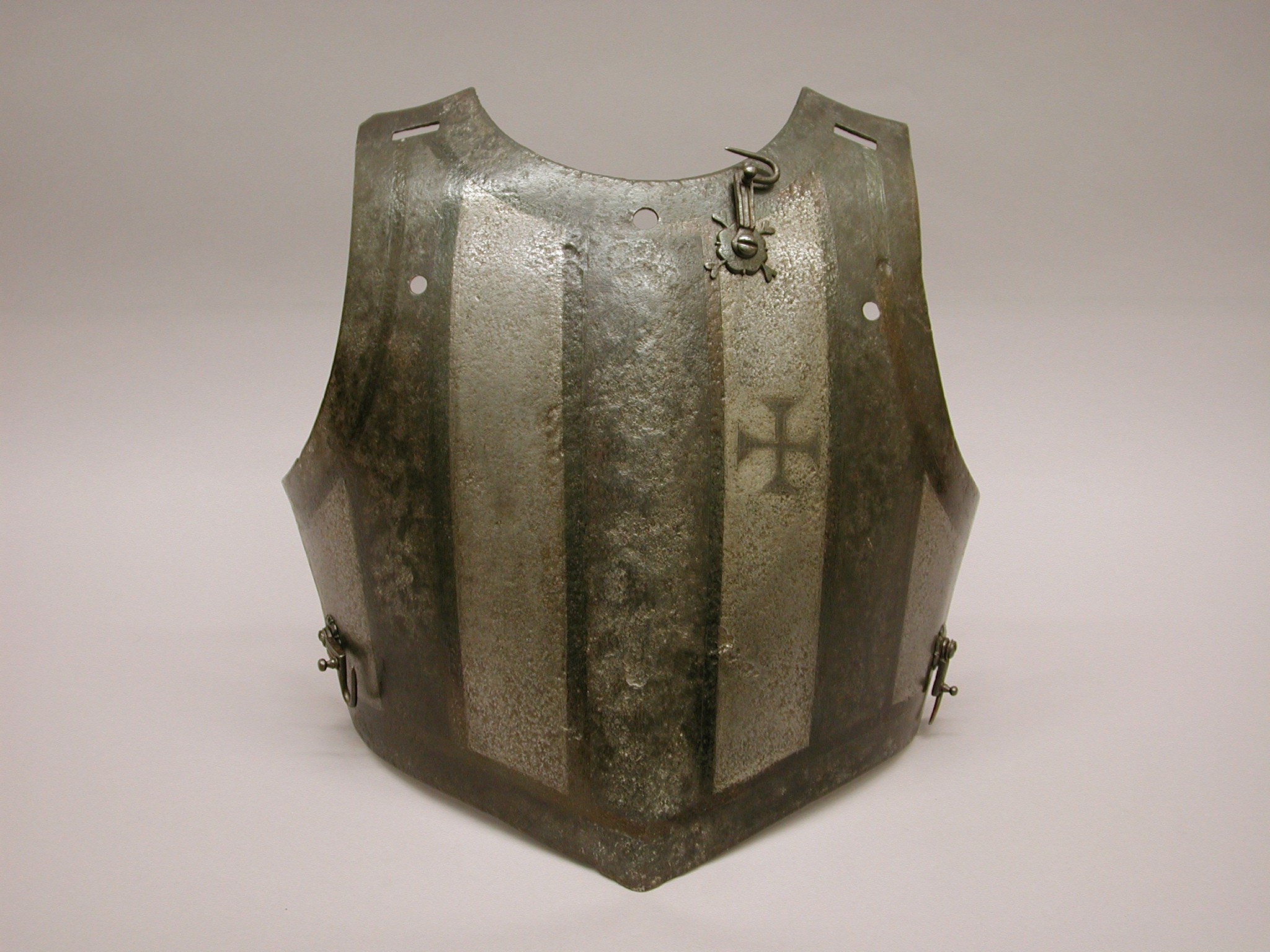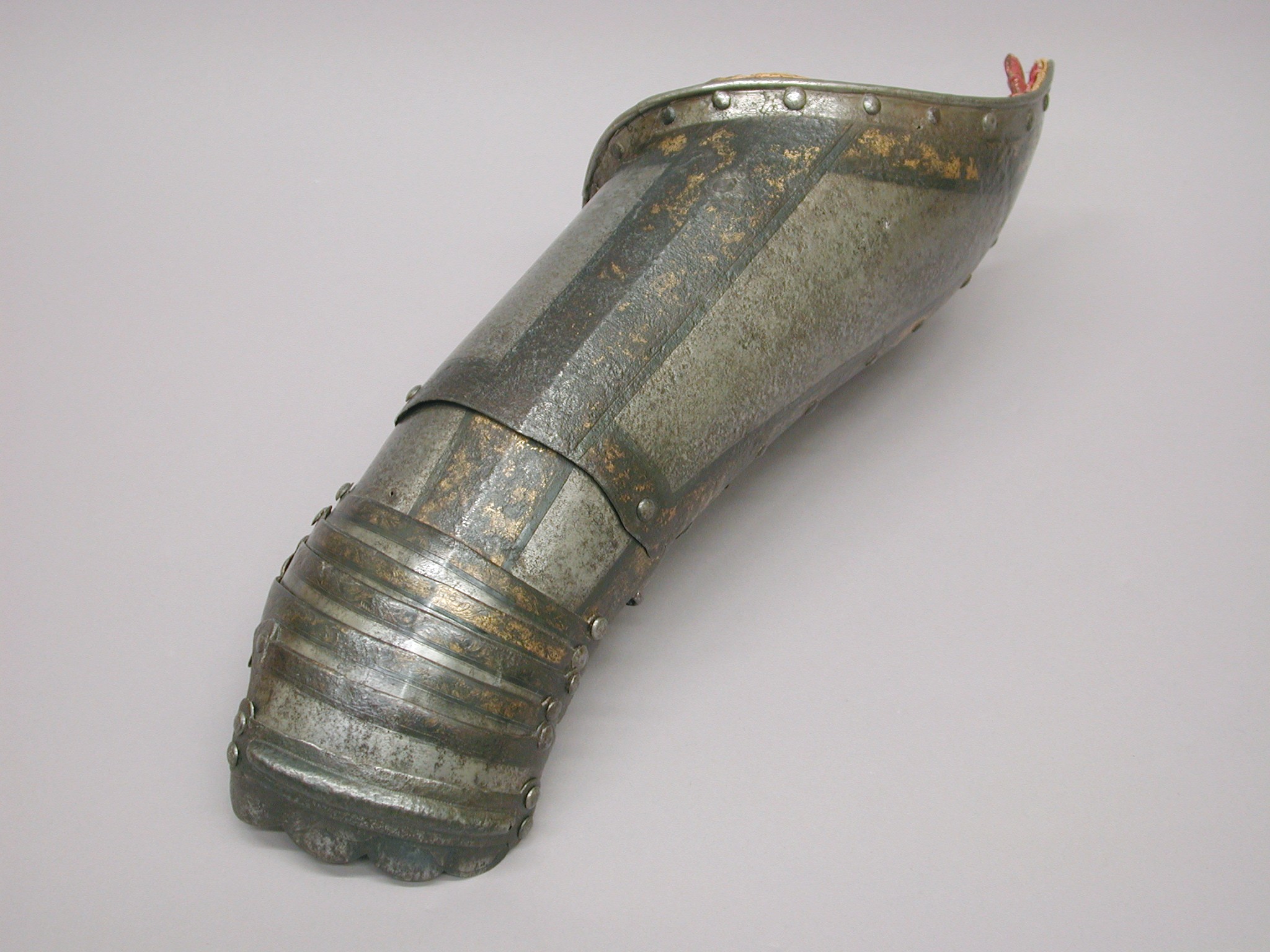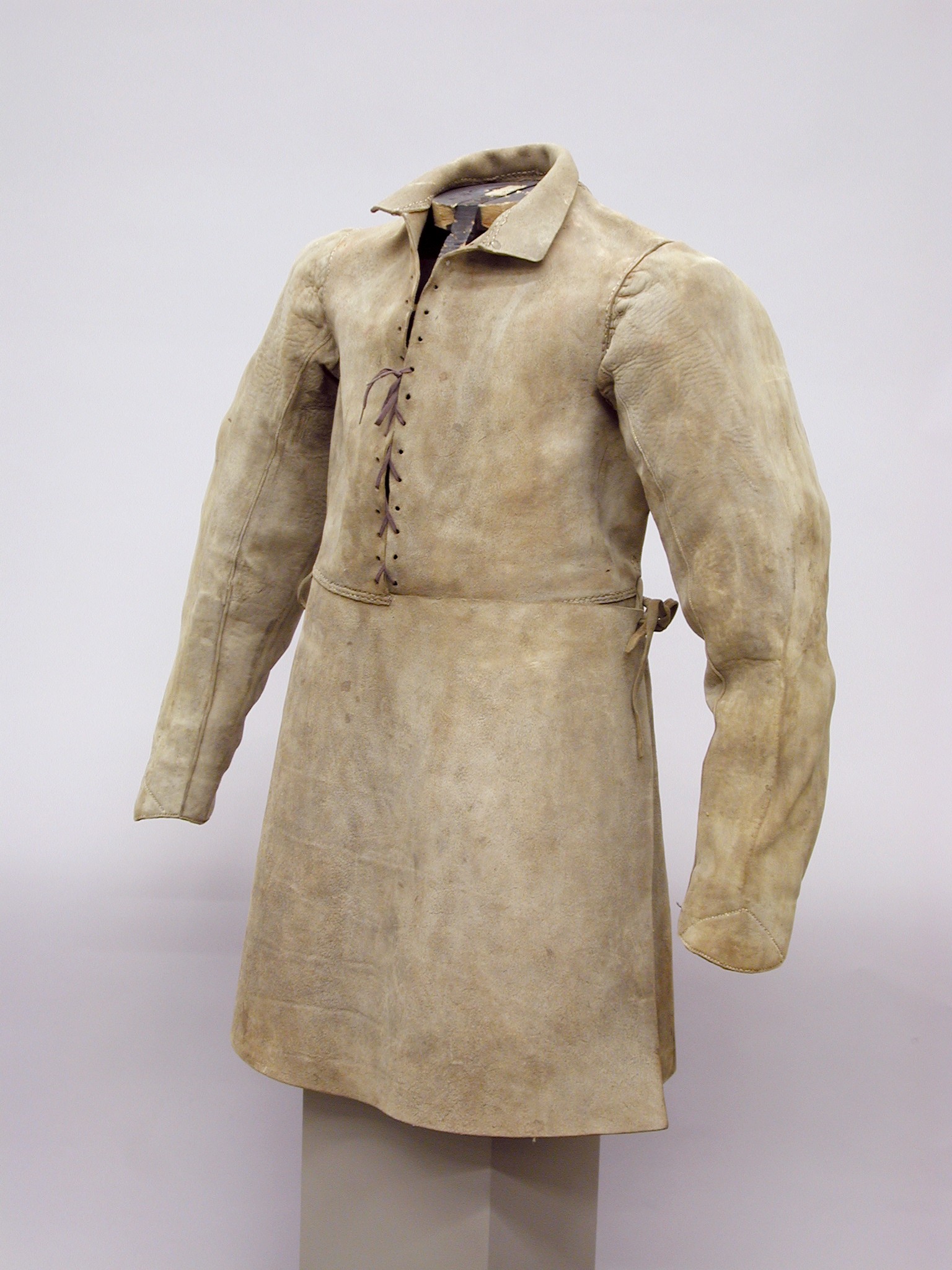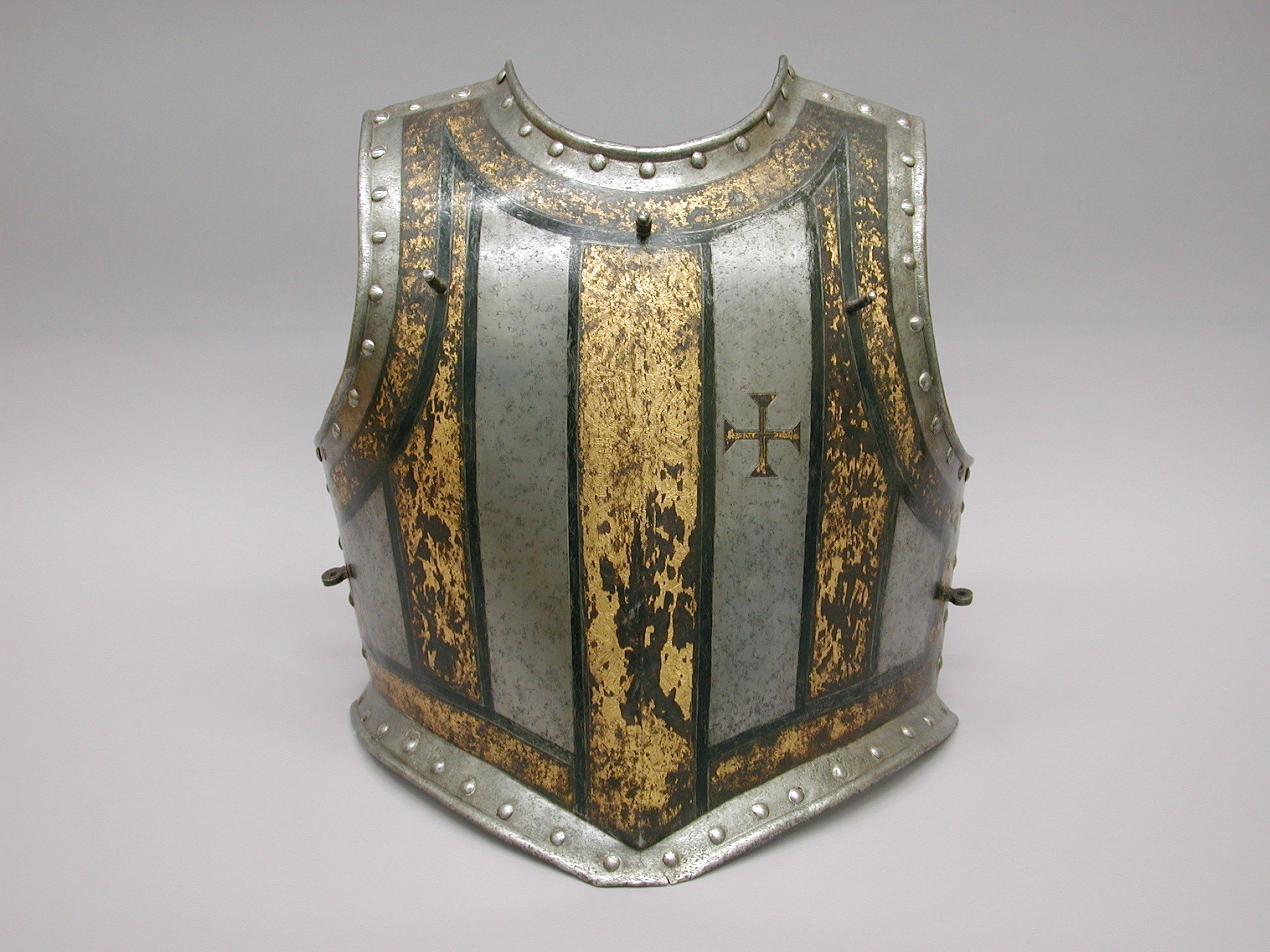Harquebusier's Armor of Pedro II, King of Portugal (reigned 1683–1706) with Buff Coat
Armor attributed to Richard Holden British
Helmet cheek pieces and metal plates on shoulder straps made by Daniel Tachaux French
This armor can be identified by its decoration as having belonged to Pedro II (reigned 1683–1706). The decoration includes the crowned monogram PR for Pedro Rex (Pedro the King) and the cross of the commander of the Order of Christ, a hereditary office held by the kings of Portugal.
Harquebusiers were armored cavalrymen generally equipped with a carbine (known as a harquebus) carried at the right side on a shoulder belt, a pair of pistols holstered at the front of the saddle, and a sword. This form of armor, consisting of a triple-barred helmet, a cuirass with a bulletproof reinforcing breastplate, and an elbow gaunlet, was commonplace in England up to about 1645. The armor of King Pedro is significant not only as a very late example of this type but also as the probable work of the London armorer Richard Holden. A very similar armor made by Holden in 1686 for James II of England (reigned 1685–88) is in the Royal Armouries in the Tower of London.
The armor is shown with an associated buff coat. This sturdy leather defense, which provided effective protection against sword cuts, was worn throughout the seventeenth century, first in conjunction with armor and later alone.
Due to rights restrictions, this image cannot be enlarged, viewed at full screen, or downloaded.
This artwork is meant to be viewed from right to left. Scroll left to view more.







